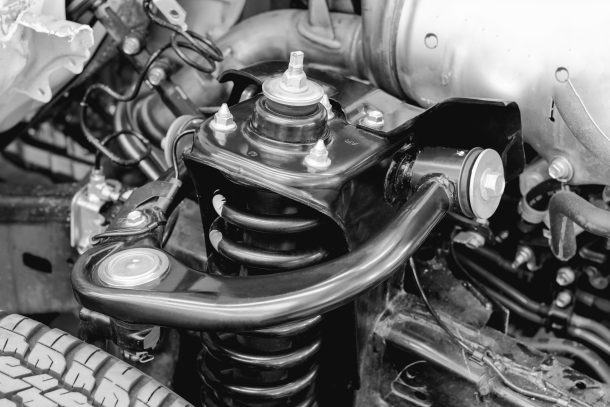#MacphersonStrut
Piston Slap: Suspension Cop Out or Wishbone Thinking?
Emanuel writes:
Hi Sajeev,
I’ve noticed that most of the mainstream sedans like the Accord, Mazda 6, Fusion and Sonata have abandoned the upper and lower control arm suspension, or what is normally referred to as double wishbones, in favor of the simpler strut based front end. Honda, which never failed to mention the Accord’s advanced double wishbone setup in their ads, claims the change was due to NVH and crash compliance issues. It also says that, because of how it tunes the strut setup, the current car handles and rides better than the double wishbone design.
I think this is a cop out and the change has been done mainly as a cost-cutting measure. As manufacturers add more content to cars that’s more readily visible (infotainment systems, push button start, blind spot monitoring, etc), things that are mostly hidden to the consumer — such more advanced suspension — are sacrificed.
My perception is that, all things being equal, a double wishbone suspension will ride and handle better than a strut setup. What say you?
Piston Slap: Strut 'yo Stuff or Make A Wish?
When you wish...
TTAC Commentator Seminole 95 writes:
Sajeev,
I enjoyed reading the responses on my NVH question.
Here’s another question for you. How significant is that Honda uses a double wishbone suspension on their family sedan (the Accord) whereas the Toyota Camry, Chevy Impala, and Hyundai Sonata use the cheaper MacPherson strut? Does the DW suspension make handling better in the turns? Does it last longer than a strut suspension, thereby giving you better ride quality as the car ages? Is the DW something that a car buyer should favor, or is it more complicated than that? I remember that many fans complained when Honda switched the Civic from DW to strut.
It looks like the Ford Fusion might use the DW suspension, but I am not sure. Interestingly, it also looks like the BMW 3 series uses a strut suspension, so maybe the DW is not necessary.

















Recent Comments